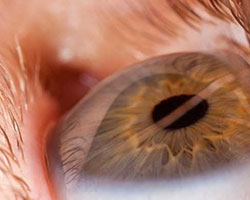
| Report Code: PP10233 | Published: June 2020 | Pages: 140 | Available format: |
| Therapeutic Area(s): | Ophthalmology | Report Type: Indication Pipeline Reports |
Overview
Presbyopia can be identified as an ophthalmic disorder which develops with age, and affects the visual ability to nearby objects clearly. This is mainly because the lens behind the iris which helps in focusing on near as well as far objects, loses its flexibility with increasing age and becomes more rigid. In general, presbyopia is experienced after the age of 40, as the lens inside the eye becomes more rigid and makes it harder to perform close-up vision tasks.
Moreover, presbyopia can be further classified into five types: incipient presbyopia, functional presbyopia, absolute presbyopia, premature presbyopia, and nocturnal presbyopia. Some of the commonly occurring signs and symptoms include, eyestrain, headaches, difficulty in reading small print, and fatigue. As an early sign of presbyopia, the vision becomes blur when attempting to do tasks at a normal reading distance.
The condition can be diagnosed by analyzing patient history, patient’s visual, ocular, and general health history, family eye and medical history, use of medication, and allergies. Some of the commonly performed assessment include, visual acuity testing, distance refraction testing, binocular vision and accommodation testing, ocular health assessment, systemic health screening, and supplemental testing.
Currently, there is no drug therapy approved for the treatment of presbyopia. However, a number of non-pharmacological approaches are being followed to treat the condition, such as optical correction with spectacles or contact lenses, refractive surgery, or experimental surgical techniques.
In addition, a number of drug manufacturers is actively involved in the development of presbyopia therapeutics. For instance, ORASIS Pharmaceuticals Ltd. is developing PresbiDrops in the Phase II stage of development. In October 2019, the company announced that the drug successfully met the primary endpoint in the Phase IIb clinical study.
Positive clinical trial results and adoption of collaboration strategies are enhancing presbyopia therapeutics pipeline. Moreover, the issuance of patents helps in achieving different milestones in the form of grants and designations from regulatory bodies and institutes, including the U.S. Food and Drug Administration (USFDA), the European Medicines Agency (EMA), and the National Institutes of Health (NIH), among others.
Pipeline Analysis
As of May 2020, the presbyopia therapeutics pipeline comprised 10 drugs in different stages of development.
Epidemiology Analysis
The report provides epidemiology forecast of presbyopia for 7 major markets (7MMs) which includes the U.S., Japan, and EU5 countries (the U.K., Germany, France, Italy, and Spain). It covers prevalent population for the period 2014–2030. According to an article published in the online portal, Ophthalmology Innovation Summit (OIS) in December 2018, 1.8 billion people across the globe were living with presbyopia in 2015; 826 million of whom had near vision impairment because they had no, or inadequate, vision correction therapies.
Competitive Landscape
Some of the key players involved in the development of presbyopia therapeutics are Cellix Bio Pvt. Ltd., Ocuphire Pharma Inc., Eyenovia Inc., Novartis AG, Allergan plc, Kubota Pharmaceutical Holdings Co. Ltd., ViewPoint Therapeutics Inc., ORASIS Pharmaceuticals Ltd., and Presbyopia Therapies LLC.
Report Insights
Some highlights of the report “Presbyopia Therapeutics – Epidemiology and Pipeline Analysis, 2020” have been mentioned below: